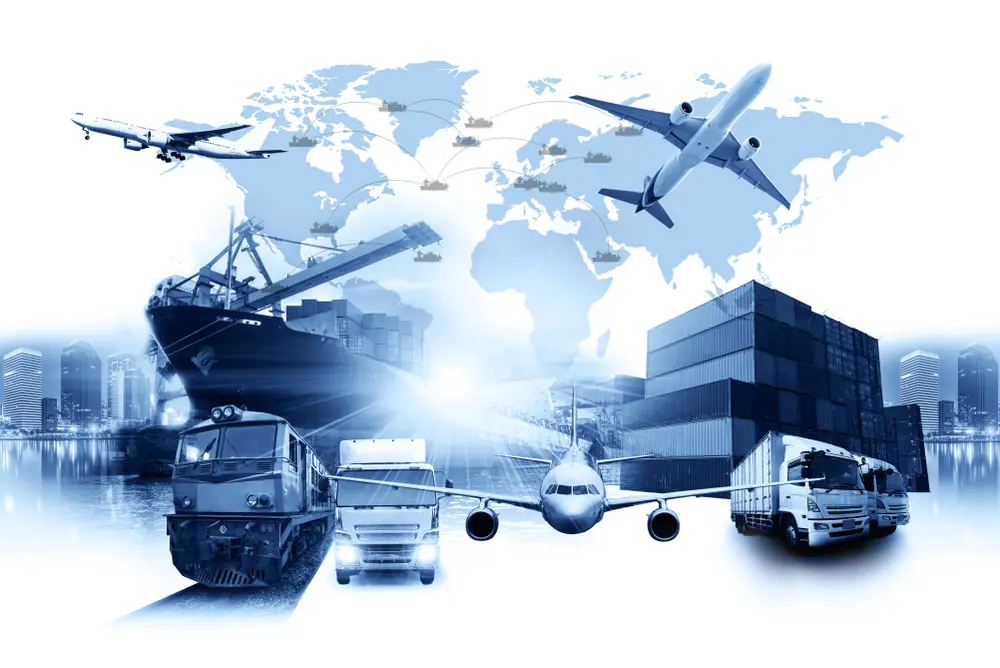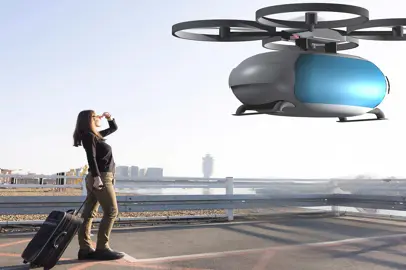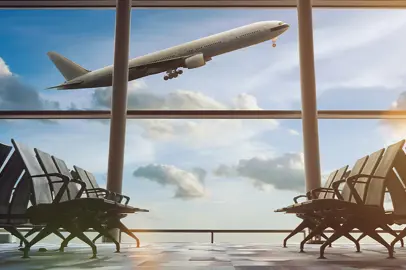18 December 2018
The future of air traffic
Interview with Alessio Quaranta, the Director General of ENAC
Alessio Quaranta, the Director General of the Italian Civil Aviation Authority (ENAC), answers the questions of the Editor in Chief of Avion Tourism Magazine and explains several important aspects in terms of growth of air traffic, intermodality, sustainability and new technologies that will influence and change the sector.

IATA research foresees a geographical shift in the development of world air traffic towards the east over the next few years. The growth of these markets will change the ranking of the top 10 markets worldwide, excluding Italy from the list.
What are the challenges to be faced in the negotiation of the new global agreements between the EU and third countries and in particular what do you think will be done for our country?
"The geographical movement of traffic towards the east is confirmed by the fact that the need for more aircraft, and consequently for new pilots, is expected to grow in the Asian region to a significantly greater extent than other areas of the world. This obviously poses a new challenge aimed at seizing the opportunities offered by the new markets. With this in mind, the conclusion of a broad agreement between the European Union and the 10 member countries of ASEAN (Association of South-East Asian Nations), which aims to promote mutual cooperation and assistance to accelerate economic progress and agreements with the rest of the world, is seen as favourable by member states.

The opening of such a large market allows European carriers to increase connections between our continent and Asia. Given the current situation of Alitalia, the ability of our main carrier to establish itself in new scenarios is unlikely, but in any case, the opening of the market may create favourable opportunities for Italy in terms of growth of air traffic. On the other hand, the system of negotiating bilateral agreements is increasingly less in the hands of individual member states when it comes to defining structures at a Community level. One example is the implementation of the open-sky agreement between the EU and the US, which is bringing about change and undoubted benefits to air transport"
Air traffic in Italy and in the world continues to grow and is expected to double over the next 20 years.
What is ENAC currently doing and what will it do in future to prevent and successfully tackle all the problems associated with the constant increase in flights?
"The most challenging issue to be faced as a result of increases in air traffic over the next twenty years is the ability to reduce the gap created between the increased number of flights and the capacity guaranteed by each airport so that this need for connectivity can be met. This challenge concerns all of Europe to the extent that the Directorate General of Mobility of the European Commission has for some years established a Permanent Observatory on the phenomenon known as "capacity crunch". The latest Eurocontrol report expects an increase in flights equal to 4 million additional transfers (arrivals and departures) by 2040 on European runways; despite this, the work currently planned for increasing the capacity of the top 20 European airports in terms of traffic volume is able to manage only 2.4 million more transfers by 2040: an insufficient infrastructure response for this kind of growth forecast. Nationally, ENAC, in recent years, has seen a consolidation of strategic planning policies in the civil aviation sector, the result of approval of the National Airport Plan, but also of the work done with management companies to facilitate defining of development plans that are able to guarantee the necessary infrastructural investments until 2030".
In an expanding market, intermodality is essential for guaranteeing the competitiveness of transport.
How is our country tackling this issue and what investments are planned in the short/medium term for connecting airports with ports and trains?
"Our country is facing the ten-year delay with regards to the integration of the different modes of transport. Only recently have we been able to bring high-speed trains to the main national airports (Rome Fiumicino and Milan Malpensa), while other European airports have been able to provide this form of transport integration for years. With the support of the Ministry of Infrastructures and Transport, we have refreshed our dialogue with the national railway network operator (RFI), incorporating the forecasts of the various multi-year investment plans on convergent issues, aligning mutual infrastructural needs and outlining the priorities to pursue.

The upgrading of the Fiumicino Airport station, the construction of stations for high-speed trains in Venice Tessera and Bergamo Orio al Serio, and the construction of the Catania Fontanarossa railway station together with construction of part of the line underground to allow extension of the runway are already underway. With regard to local public transport, the ‘people mover’ has started operating between the railway station of Pisa Centrale and the airport, and the shuttle connecting Bologna Centrale with the airport will soon be completed. In addition, the Florence Airport tramway stop and underground stations at the airports of Naples and Milan Linate are under construction".
Increased air traffic also means increased carbon dioxide emissions.
What are the actions planned at Community level and what projects are you working on to reduce environmental pollution?
"Our commitment to the environment is explicitly stated in ENAC’s mission statement and our active participation, both nationally and internationally, is certainly focused on the development of civil aviation in a way that is obviously safe but also sustainable. The increase in air traffic not only increases carbon dioxide emissions, the combustion gases released into the atmosphere by aircraft engines are actually a gaseous mixture of various pollutants, such as fine particles (the so-called particulates) and other gases (nitrogen oxides, carbon monoxide, etc.). The international community is well aware of the need to contain pollutants deriving from the increasing volume of air traffic. In real terms, this must be translated into cooperation among states all over the world: the challenge against global warming not only involves Europe, but is, in fact, a global challenge. The consequent approach must be holistic, intervening on several fronts simultaneously: from the continuous improvement of the efficiency of routes to the improvement of engines by implementing the most up-to-date construction technologies.

For example, ICAO standards concerning CO2 emissions produced by turbojet aircraft engines, and currently being developed, have been recently issued for particulate matter (nvPM). ENAC actively cooperates with all relevant parties involved in these processes. Furthermore, this commitment is also aimed at developing alternative fuels that, when used, guarantee atmospheric emissions of greenhouse gases in quantities that are even significantly lower than those produced by fossil fuels. With this in mind, ENAC has recently assigned funds made available by the Ministry of Infrastructures and Transport to a consortium of three Italian universities for a research project on the production of biofuels extracted from algae, which also received a prize for being a project of particular interest. Worldwide, the ICAO recently approved the Carbon Offsetting Reduction Scheme for International Aviation (CORSIA), which is based on a similar concept to the European ETS (Emission Trading Scheme), the difference being that the revenue generated by applying this scheme will be used to finance projects of an environmental nature. Italy is one of the nations that has volunteered to provide the necessary know-how to support developing countries without the necessary skills for implementing this scheme".
As shown by the figures in the ENAC report on performance of the first half of 2018, the increase in the number of flights also meant an increase in disservices.
How does ENAC intervene in these cases to protect passengers' rights?
"Civil aviation, in general, is a complex system in which the actual flight is only a part, a component – although an important and fundamental one – of the entire journey within the wider air transport system. The passenger is undoubtedly the central element of this system. ENAC has the institutional task of ensuring that the whole travel process works in the best way possible, in a fluid, efficient and safe manner, according to specific times and procedures that ensure that the passenger is not in any risk or suffers any inconvenience and benefits from the air transport services provided. ENAC is committed to this important task by regulating processes and procedures through the careful verification and continuous monitoring of compliance with the rules and safety and security standards by all entities that, in their various capacities, are part of the air transport system. ENAC monitors the traffic data provided by operators and analyses the disruptions or disservice reported by passengers. Where there are particularly serious reports or episodes that are repeated, specific investigations are carried out on these individual incidents and on the reasons behind them, often reprimanding carriers or meeting them together with the Authority in the country that issued the license. To protect the passenger, since all complaints in EU countries are treated in the same way, the Authority intervenes only to impose sanctions. Therefore, in our case, ENAC imposes to sanctions on the carrier if it violates the provisions of the Regulation.

The system, which is uniform throughout Europe, could certainly be improved from different points of view. The tools could be of different types, but always aimed at a proactive exchange with the industry for improvement of the entire system. If, through a reform of the European regulation, greater powers (currently only sanctioning) could be assigned to national bodies, we could intervene not only by issuing a sanction, but also with a type of arbitration hearing on the application of the regulation by the carrier. This would allow more direct protection, which would have a more direct effect on the carrier and produce faster results for the passenger who had experienced a delay or cancellation. Another form of guarantee could be to identify an insurance mechanism that gives the insurer the responsibility of reimbursing the passenger, regardless of the carrier's responsibility or liability in the event. ENAC is involved in verifying compliance with the technical regulations and operational and quality standards of airport services, as well as the monitoring and control, through inspection and audit activities, of people and entities working within the system. In general, with a view to improving the system, we are evaluating taking preventive action by monitoring the carriers' activity, based on risk assessment and on an approach that takes into account the performance of the air carrier. This system involves the same carrier formulating a schedule based on objective data of its capacity in terms of capital goods (aircraft, reserve aircraft, etc., scheduled maintenance times and so on) and human resources (crews, rest times, holiday periods, etc.), taking into account the results of the same season in the previous year and all possible variables, even if these involve causes out of its control such as weather events, strikes, ATC problems, etc. If flight planning takes into account the performance achieved, major delays and cancellations due to non-exceptional operational reasons could be, if not avoided, strongly limited".
Biometric, blockchain technology for shared data control, robotics, differentiated use of drones, aircraft, airtaxis and other autonomous flying systems, flying cars and sub-orbital flights are now a reality.
How do you envisage the future of air travel and how do you think it will change the way we fly?
"Already from the list given in the question, it is clear that we are experiencing a phase of radical technical and scientific transformation. At the same time, however, if the challenges to be faced are these, the solutions and regulatory frameworks are still largely to be identified. Everything will have a certain impact on aircraft operators, on the ground and in flight, and will lead to air transport that is capable of providing better services in terms of both quantity and quality, all to the benefit of passengers who will enjoy a better offer of transport. However, I do not believe that it will substantially change the way passengers fly, except in terms of greater comfort of the overall flight experience.

New technologies, such as drones, flying cars, autonomous flying systems and sub-orbital transport, are, however, a different matter; they essentially represent new market segments that will be slowly added to traditional commercial transport, which will be increasingly called to guarantee the connectivity between countries. I am however confident that the debates on urban mobility that have just begun, some of which have been referred to here, will lead us all to live a daily life that is as yet unknown. In general, I believe that if we travel using conventional air transport with greater ease and more comfort, urban mobility will be a whole new way of conceiving and experiencing movement and accessibility to services".
Edited by Angela Trivigno
Visual and photos: © Sisterscom.com, Shutterstock
Photo of Enac: Ufficio Stampa Enac
© Sisterscom.com - All rights reserved.
You might be interested in
Useful Info

Authority
ENAC launches the first European U-Space
From 1 January 2026, the "U-Space San Salvo", the first in Europe, will be operational: an airspace for manned flights and remotely piloted flights of unmanned vehicles for experimental activities and emergency operations
Useful Info

Authority
HyperTwin Leads the Evolution of Future Air Mobility
Enac: HyperTwin will help redesign the airspace in the coming years for drones, eVTOLs, advanced, urban, territorial, safe and sustainable air mobility
Useful Info

Authority
Airport infrastructures and air transport development: the focus of CESISP at Bicocca and the contribution of ENAC
At the University of Milano-Bicocca, CESISP analyzes the role of airport infrastructures for growth, public finance and the country's competitiveness; ENAC Director General D'Orsogna recalls infrastructural capacity as a lever of the "Italian model"

